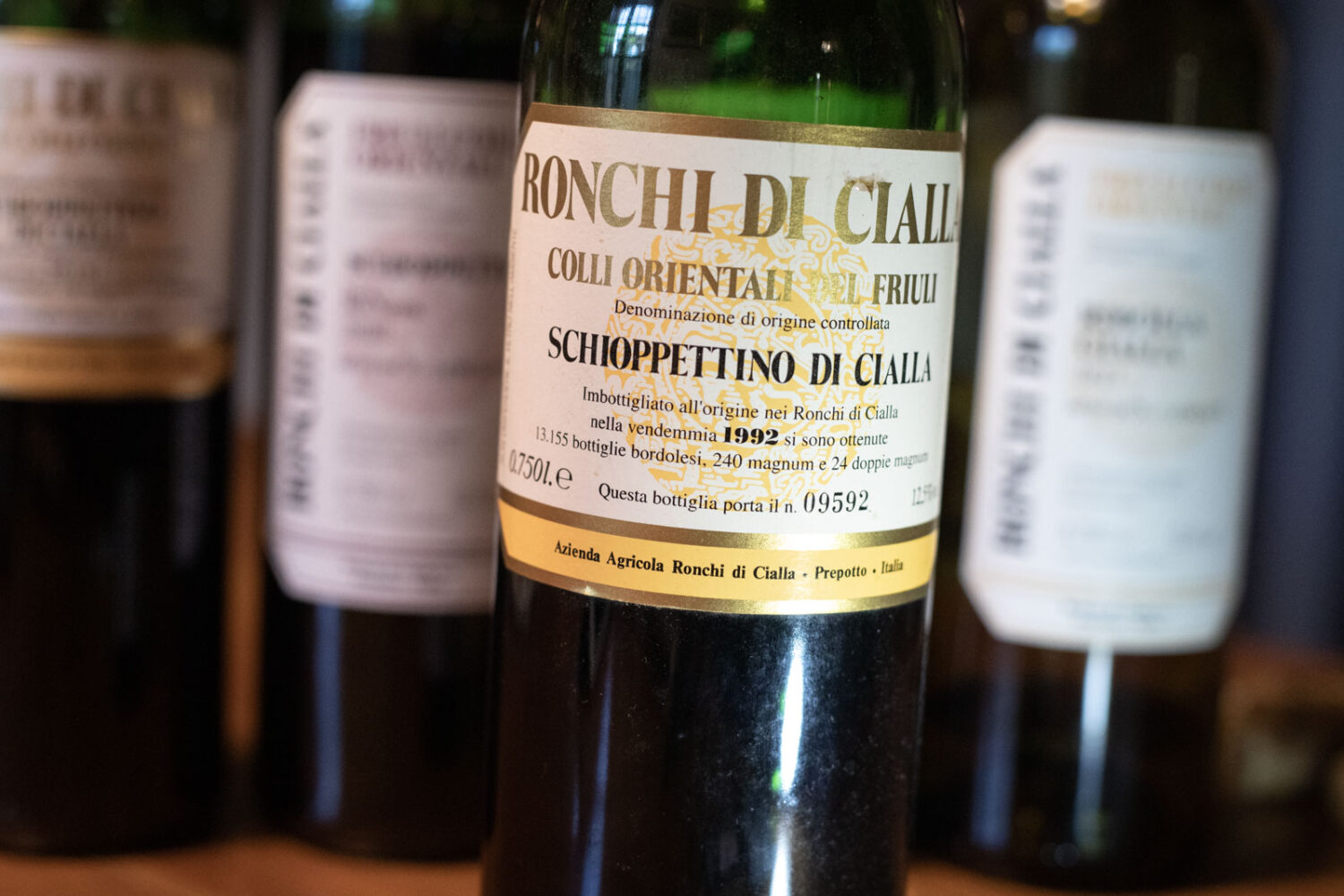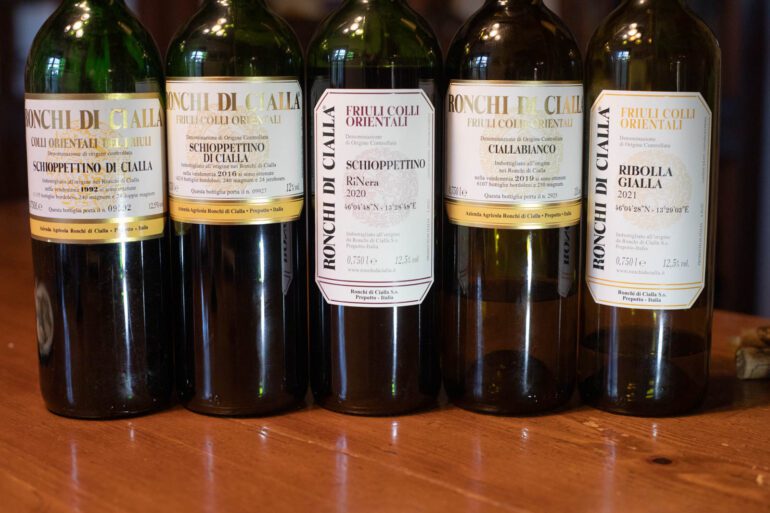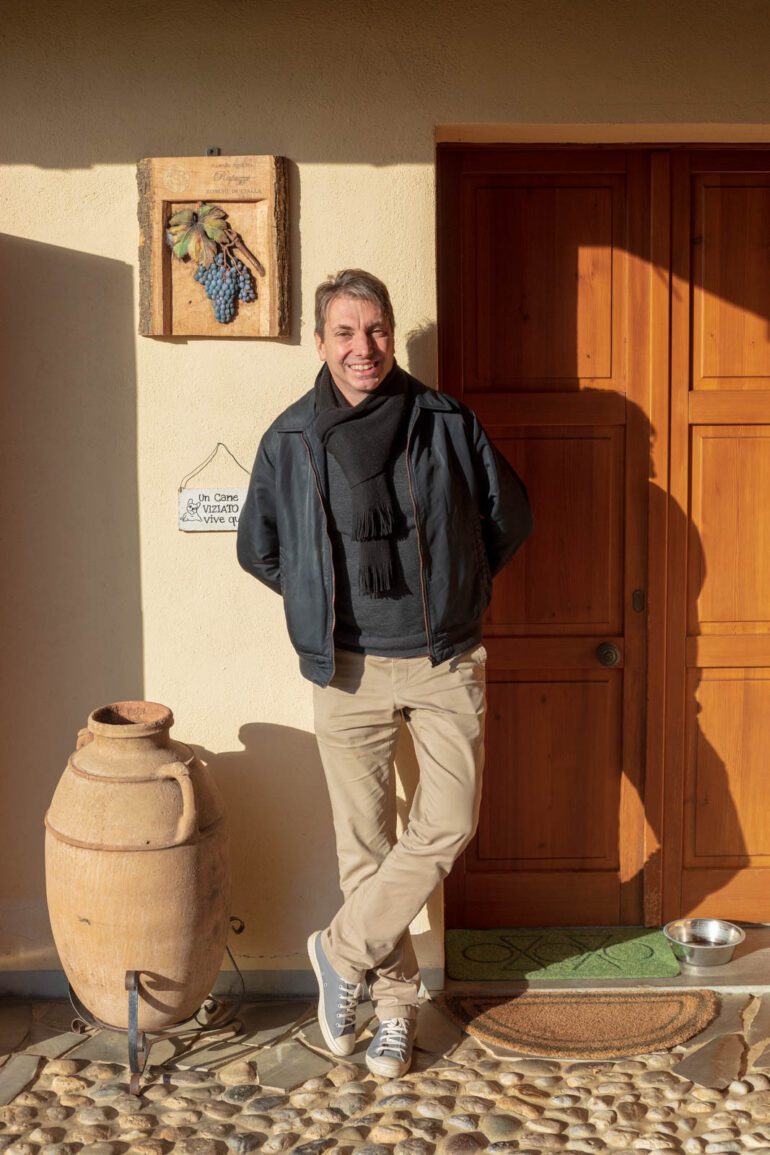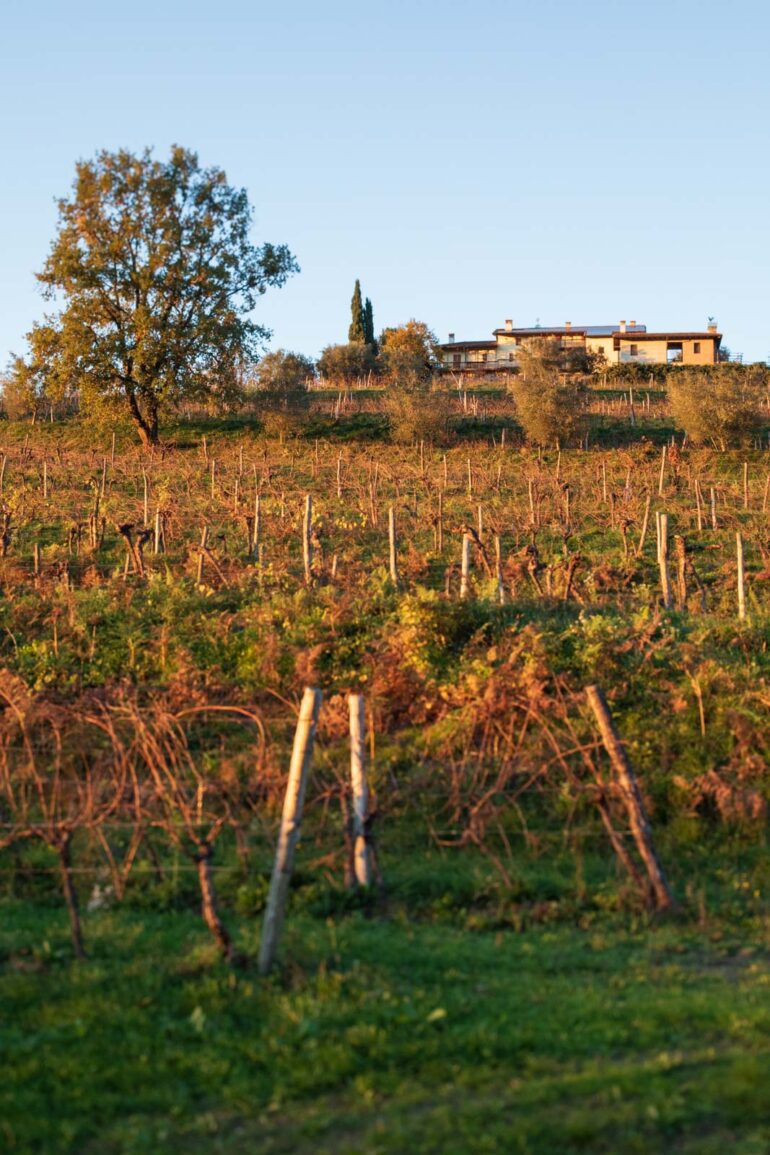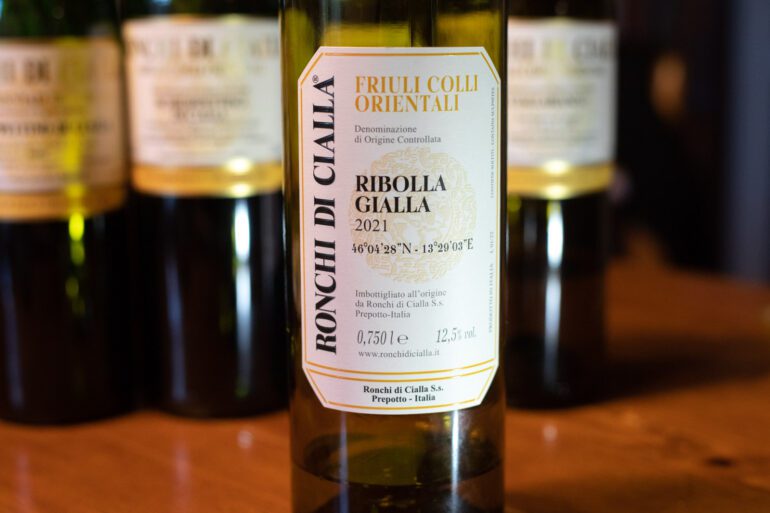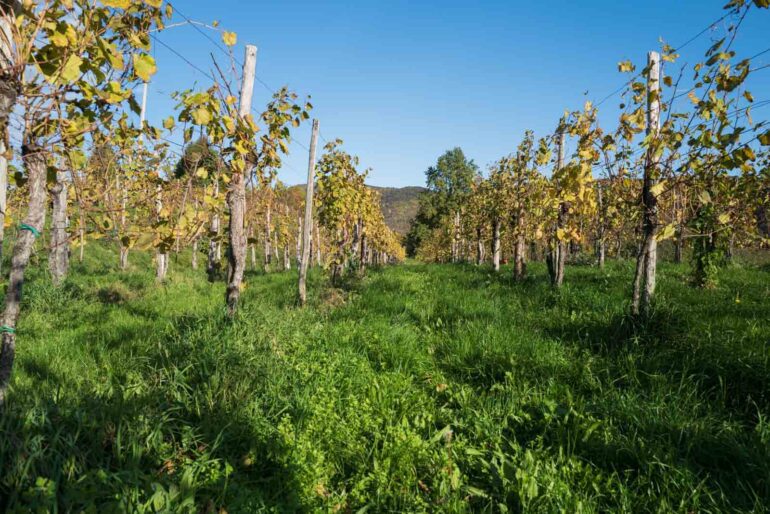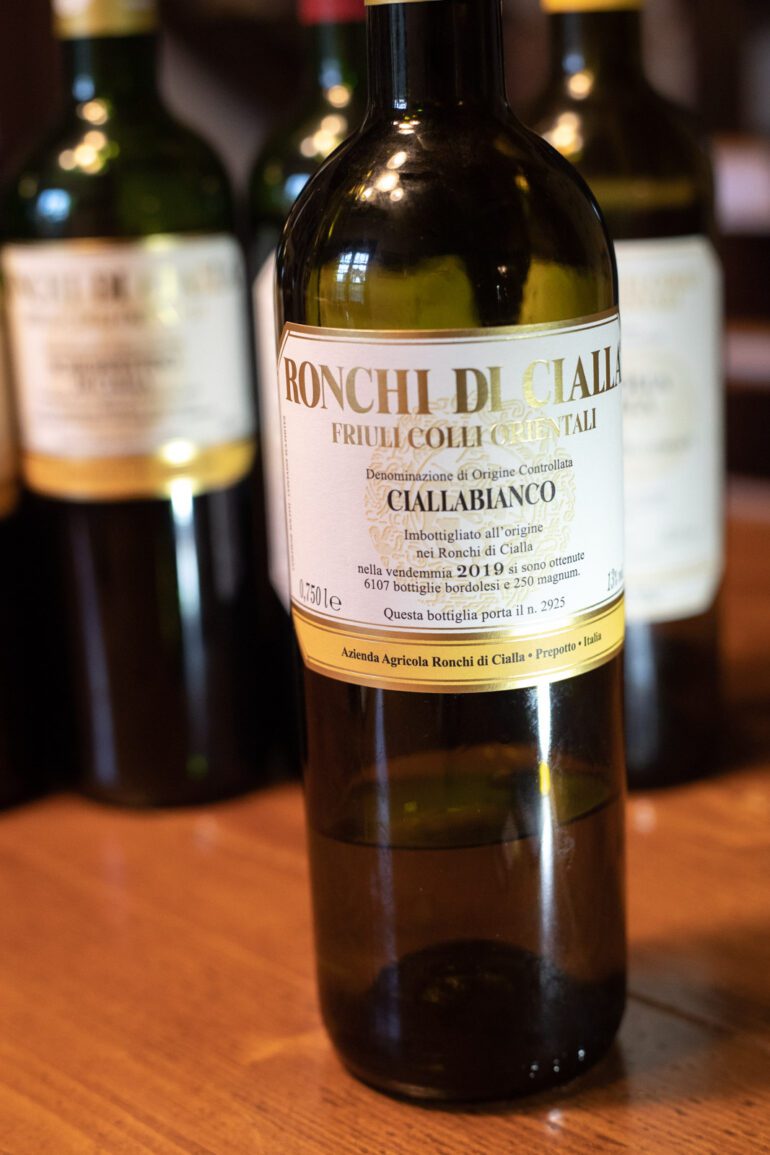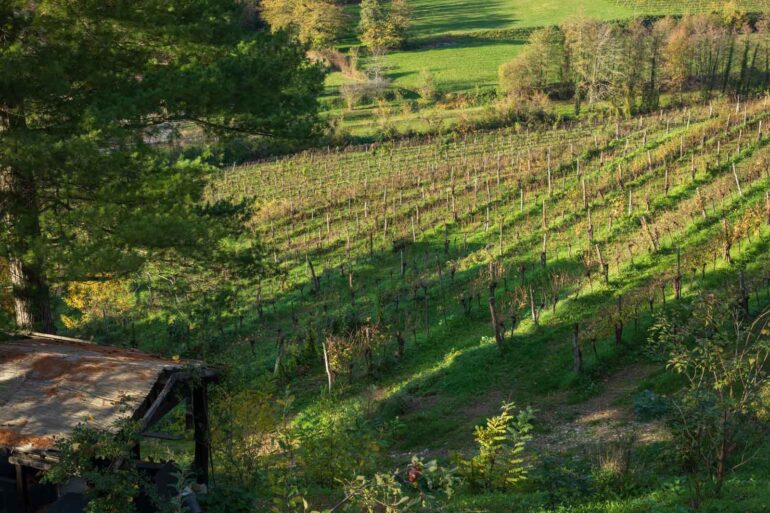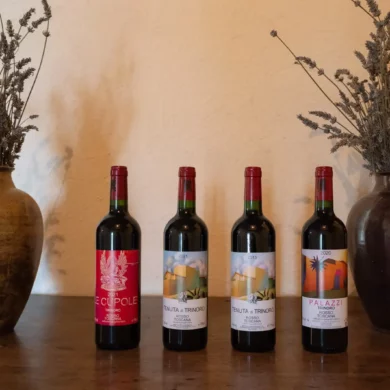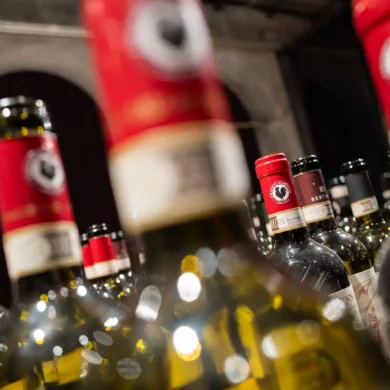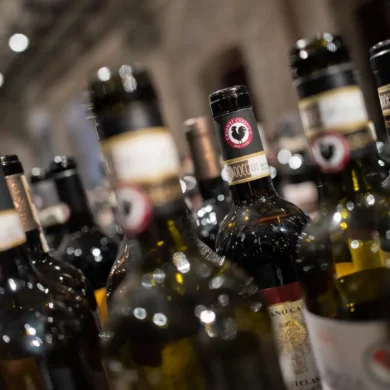The wines of Ronchi di Cialla are easily among my favorite in Italy: they taste pure, they are versatile at the table, they are expressive in so many different ways, and they are amiable and approachable right away. You are welcome to cellar them and collect them (as evidenced in dramatic fashion by the last wine listed below), but these are also wines that come ready upon release (versus so many Italian wines, especially red, that require some aging before showing their stuff).
But it would be disingenuous to talk about my admiration of their wines while glossing over the story of Ronchi di Cialla, because in the end, that’s what’s most special about this winery. In the 1970s, they saved Schioppettino — Friuli’s most vital and versatile red grape — from oblivion, and they continue to trailblaze by advocating for biodiversity in agriculture, something that I believe is more important as a credential than organic or biodynamic practices alone.
The precision in these wines is in their sense of place. “Cialla is something different,” Ivan Rapuzzi first told me as we stood on the edge of his vineyards in the tiny subzone of the Friuli Colli Orientali DOC along the Italian-Slovenian border. “It is something a little bit unique.”
Not only is it the refuge that allowed Schioppettino to recover and thrive (and become the darling for Friulian wine lovers), but it is a top cru for Ribolla Gialla, the thick-skinned white grape that gives us some of Friuli’s most expressive white and macerated (orange) wines.
What follows are notes on four of their most important wines, plus an additional note on the flagship wine — Schioppettino di Cialla — with 30 years of age.
2021 Ronchi di Cialla Ribolla Gialla Friuli Colli Orientali
Ribolla can be a tricky grape to identify blind because it comes in so many forms: bright, fresh mineral white; textural and structured whites; rich and macerated with unfathomable depth. Those thick skins lend winemakers a lot of potential, and they are a direct natural adaptation to the rainy climate of Friuli. “Ribolla Gialla is our most historic white wine variety,” Rapuzzi told me. “Because this grape was born in Friuli.”
And in the Cialla Valley it is very rainy. The Rapuzzi family prefers to harvest late in drier conditions, prolonging the ripening as much as possible. That longer period of time means enhanced acidity, richness and depth, but they do not macerate the wine on the skins for an exceedingly long time — less than a day, according to Ivan Rapuzzi. This is a white wine made in stainless steel, and it ages on the lees for a minimum of three months with frequent stirring.
As a result, the 2021 Ribolla Gialla (★★★★ 3/4) boasts a lovely silkiness on the palate. Green fruits, herbs, bitter almonds and hawthorn are all suggested by its aromas and flavors, but it was the lovely minerality that unified everything for me. “It has electricity,” I wrote in my notes during the tasting. Reach for this wine any night of the week; it is highly versatile.
100% Ribolla Gialla
2019 Ronchi di Cialla “Ciallabianco” Friuli Colli Orientali
“My family has only worked with indigenous grapes,” said Ivan Rapuzzi, a badge of honor for this proudly Friulian estate. While the Friuli Colli Orientali DOC is one of the few places in Italy where I seek out Sauvignon Blanc and Merlot, its unique cast of local characters can make quite the ensemble. Throughout my travels to the Collio and the Friuli Colli Orientali DOC, the bianco blends were often the most thrilling and nuanced of the white wines.
Here, the Rapuzzi family resurrects a traditional blend to dramatic effect. With its auburn clusters and ability to retain acidity well into late harvest, Picolit is better known for its sweet wines, but as a dry white wine it has a nice stone-fruit disposition that counters Ribolla Gialla’s green fruits nicely. And Verduzzo lends power to the mix.
The sum of these parts in the 2019 “Ciallabianco” (★★★★★) is nothing shy of outstanding. A serious wine on a par with top-level German Riesling and Grand Cru Chablis (i.e. in terms of mood, longevity, type of drinker), it carries a brooding energy under its stony and citric surface. The Ribolla Gialla and Verduzzo are harvested and co-fermented in barrel together, while the Picolit is blended in later. Consider this wine for a special occasion, but don’t limit it to just that.
60% Ribolla Gialla, 25% Picolit, 15% Verduzzo
2020 Ronchi di Cialla “RiNera” Friuli Colli Orientali Schioppettino
Schioppettino and Ribolla Nera are one and the same, and while a lack of DNA connection between the grape and Ribolla Gialla makes the latter name a thing of the past, Ronchi di Cialla likes to tip their hat to it with “RiNera,” the more youthful and less-structured entry-level Schioppettino of the estate. The 2020 “RiNera” (★★★★ 3/4) is a nice wine to reach for in a First-Taste of Schioppettino scenario, for it reveals the pure character of its natural fruit profile: a mash-up of juicy raspberries, currant, pomegranate and plum. You might also find the peppercorn spice of the grape to be somewhat Cabernet Franc-like.
I particularly like how delicate, juicy and lean “RiNera” shows upon release — a nice partner for summer grilling.
100% Schioppettino
2016 Ronchi di Cialla “Schioppettino di Cialla” Friuli Colli Orientali Schioppetino
1992 Ronchi di Cialla “Schioppettino di Cialla” Friuli Colli Orientali Schioppetino
The star of the show at Ronchi di Cialla is undoubtedly the “Schioppettino di Cialla,” a wine that vintage after vintage shows remarkable complexity and richness while preserving its sense of lightness. This wine is consistently open and approachable in youth, but also reveals quite a bit of surprise with age.
That said, the 2016 “Schioppettino di Cialla” (★★★★★) seemed to be in the sweet spot, offering wonderful aromas akin to plums and pomegranate with suggestions of tilled soil and snappy peppercorn. The overall sensation on the palate is of high-toned fruit and compelling spice, with that earthiness giving the wine edge. The tannin profile is also quite unique in that you don’t notice them at all, but boy are they there, holding everything together. Rapuzzi described the “long-chain tannins” of Schioppettino, which lend silkiness and keep the wine from being prickly in the mouth. This exceptional vintage demonstrates that give and take — a hallmark of what we often simply call “elegance” — brilliantly.
But to show me how the Schioppettino di Cialla holds its form over proper aging, Rapuzzi also opened and poured a 1992 “Schioppettino di Cialla” (★★★★★). Incredibly, the color was almost exactly the same as the 2016, showing considerable vibrance and none of the “red brick” we often see with many Italian red varieties at such a stage. Furthermore, the alcohol levels (12.5%!) were unchanged, a sign of how special the alchemy of Schioppettino and the Cialla Valley is in the age of climate change.
Next to its younger counterpart, the 1992 was immediately identifiable as Schioppettino di Cialla, with just a hint of leather being that “something extra,” as well as more subtlety. “A quiet beauty” I wrote in my notes, before fumbling for words to describe the persistence of the wine’s acidity. You know a wine is excellent when your words fail you!
This is not only one of the most unique wines in all of Friuli; it is one of the greatest wines in Italy. Any wine obsessive would find benefit in getting to know its voice.
Both wines are 100% Schioppettino
Note: This tasting occurred in November 2022.
Ronchi di Cialla: The Saviors of Schioppettino
In a hidden valley in Friuli, the Rapuzzi family presides over a biodiverse treasure. Our companion story might have you looking at land management for wine in a whole new light.

